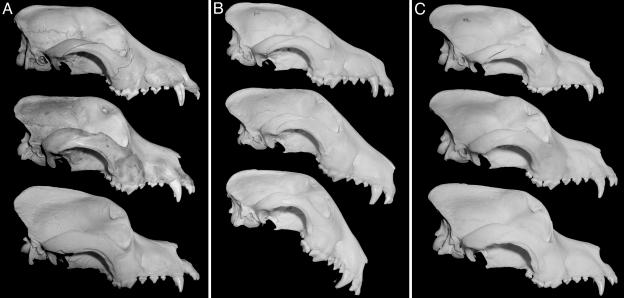Fig. 3.
Rapid and sustained evolution of breeds. (A) Purebred St. Bernard skulls from ≈1850 (Top), 1921 (Middle), and 1967 (Bottom). (B) Purebred bull terrier skulls from 1931 (Top), 1950 (Middle), and 1976 (Bottom) (24). (C) Purebred Newfoundland skulls from 1926 (Top), 1964 (Middle), and 1971 (Bottom). Despite the lack of genetic diversity caused by population structure and history, these breeds are able to continually create new and more extreme morphological variations at a rapid and sustained pace. Analysis of the Runx-2 repeats in the 1931 bull terrier reveals a more intermediate allele (Q19A14) than is present in the modern bull terrier (Q19A13).

